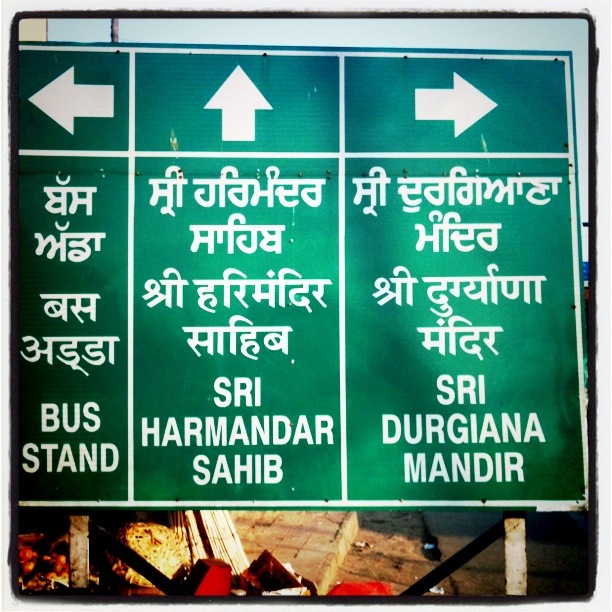

I used to live in an orange bungalow next to a decrepit skate park in India with a dog by the name of Snarfblatt. He especially enjoyed chasing cows off that odd property, which was great, because empty pool cow-removal is neither easy nor fun. Ol’ Snarfy reigned supreme as the king of cow maintenance while I was off studying yoga, teaching partner acrobatics, haggling at the market, or being pleasantly overwhelmed by vibrant culture and intense surroundings. You know, a typical day in Goa.
One day, he was there. The next, he wasn’t. Equal parts loyal and independent, it’s safe to say an Indian dog has moved on to something different when they stop showing up for free food. That, and my British yogi neighbors in the adjacent bungalow said they saw a Snarfblatt-shaped stain down the road a few days prior.
One moment everything is everything, be that everything a good, bad, or ugly. Something happens, things change, and then everything becomes something else. Consider this a thoughtful look into how we effect change and, better yet, how change affects us.
There are two types of change: static and dynamic. Static change is what it is. A drop in barometric pressure means it’s going to rain; a building becomes taller when another floor is added; drop a couple degrees and water becomes ice. Measuring static change is about as simple as it gets and is more a symptom than an issue. Static change is tangible, immediate, definable.
Dynamic change deals more with the after-effects, where things get really interesting. Static changes may mean little, but dynamic change often means a lot. A butterfly farts on a tulip in Sardinia and three days later the Nikkei index drops 15 percent. The world is a wild place where everything is connected to everything else.
We effect change and change affects us. Every little thing we do leaves a fingerprint, triggering something else that leaves two more, in turn creating four and so on and on and on. If change is vibration, a shift in chords creates another song entire. And if life is vibration as well, there is incredible value in effectively leveraging change to positively affect our lives.
Snarfblatt’s change resulted in an abrupt and uncomfortable end. “Hey,” Snarfy might have thought as he watched me leave for the day, “I totally love running alongside my human as he drives off, and I totally love chasing cars. Ima get up out off this here pile of leaves and do just that! Oh, look — A bus!”
Poor Snarfblatt. His everything was everything, something changed, and his everything drew quickly to a close.
One can’t recognize routine — and past that, comfort — without accepting change. Often, we don’t get to choose when that happens. Life looks you straight in the eye, starts laughing manically, and then spins wildly out of control. We lose jobs, loved ones, identities, wallets, stuff, things. We gain experience, character, hindsight, foresight, and insight despite wanting to or not. Why? Obviously, a butterfly farted on a tulip in Sardinia, and we were powerless to fight it.
Or were we? There are two ways to deal with change: either focus on a positive direction or trying to kill all the farting butterflies. One can be hard, the other impossible. Change is constant, permanent. Even if carefully replaced exactly as it was, you still participated. Vibration occurred.
Understanding change can be just as hard, if not harder, than actual change itself. Patterns of vibration fold out endlessly complex. It just doesn’t make any sense.
That is, until it does. One day, something clicks. Things begin to make sense. You learn something about your self, and past that, the world. One day I was an acrobatic yogi living next to a skate park in India with a wild dog named from a Little Mermaid reference. The next day I wasn’t. Change happened, and everything became everything else.
This happens. Every day.
We effect change, and change affects us. A long as we can effect positive change, we can invite and be available to be affected positively. Just as everything is everything, change is change as well. Keep putting out positive change, surround yourself with others who do the same, and perhaps butterflies will start farting in your favor.
Prepare to be challenged regardless of how much good you put out there. All change is neutral until we deem it “good” or “bad.” The real skill is inviting a thoughtful, supportive response instead of a butterfly-killing knee-jerk reaction.
And here we go again: One day, things were as they were; the next day they were different. Life is change, and change is constant. Until I realized this, change constantly surprised me.
Go figure.
For what it’s worth, once everything changes, things will become familiar and eventually normal. Getting there might not be easy — by any stretch of the imagination — but it’s only as hard as we make it out to be. My everything used to be a desk job as an email wrangler about to explode in NYC. Something happened, I rode the wave of change, and my everything became an acrobat yogi chocolatier thriving in San Francisco.
Butterflies fart all the time, and we’re left to pick up the pieces. I should watch the language I choose, as it sends vibrations out which resonate with the frequency of the reality being creating every second. Yup, I just said that, you just read it. Maybe, just maybe it made sense. Welcome to the finer points of manifesting change.
Originally posted on the Huffington Post, April 20, 2012
http://www.huffingtonpost.com/daniel-scott/manifesting-change_b_1435651.html
© Daniel Scott Yoga | All rights reserved
Design by NXNW.